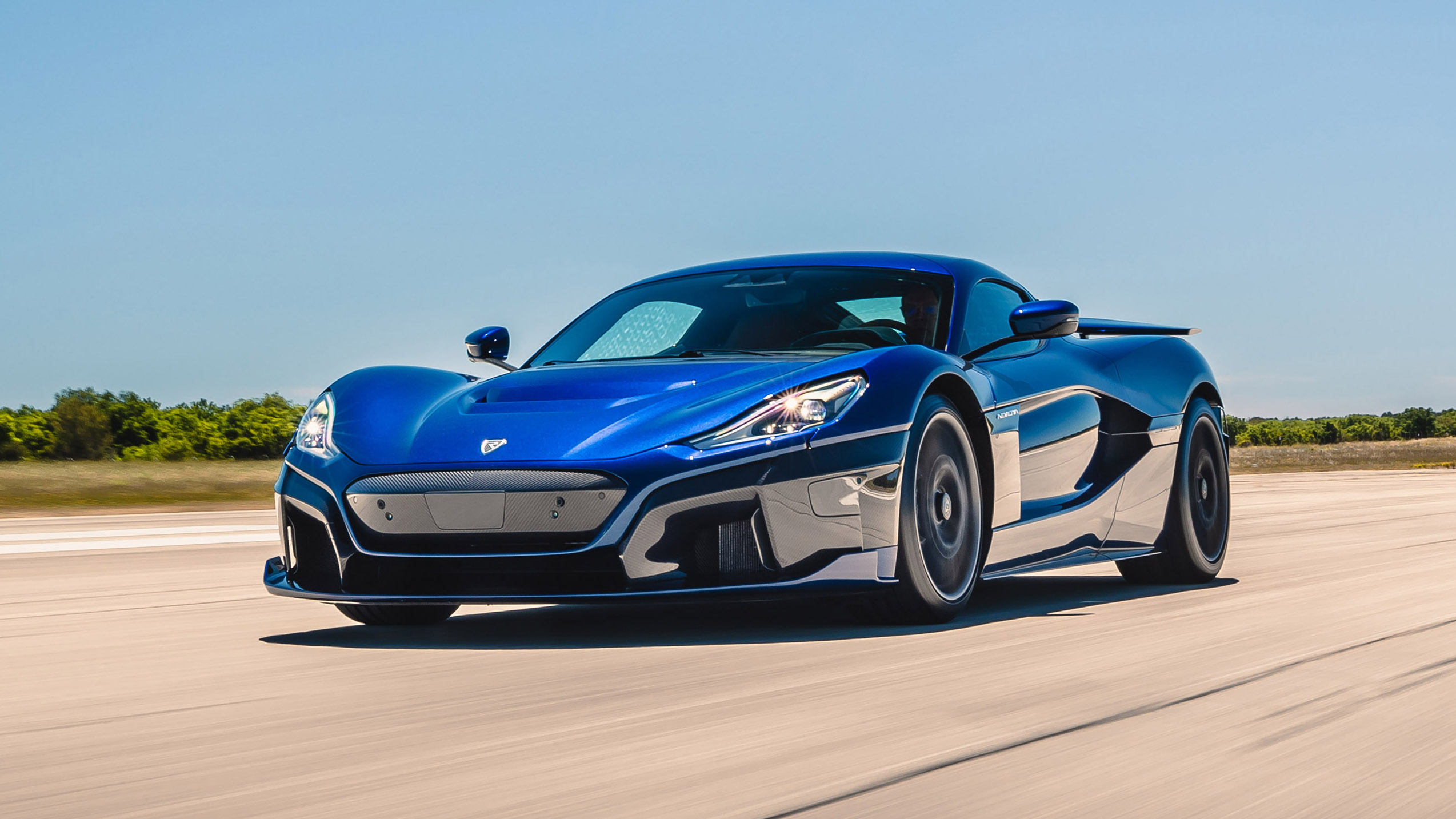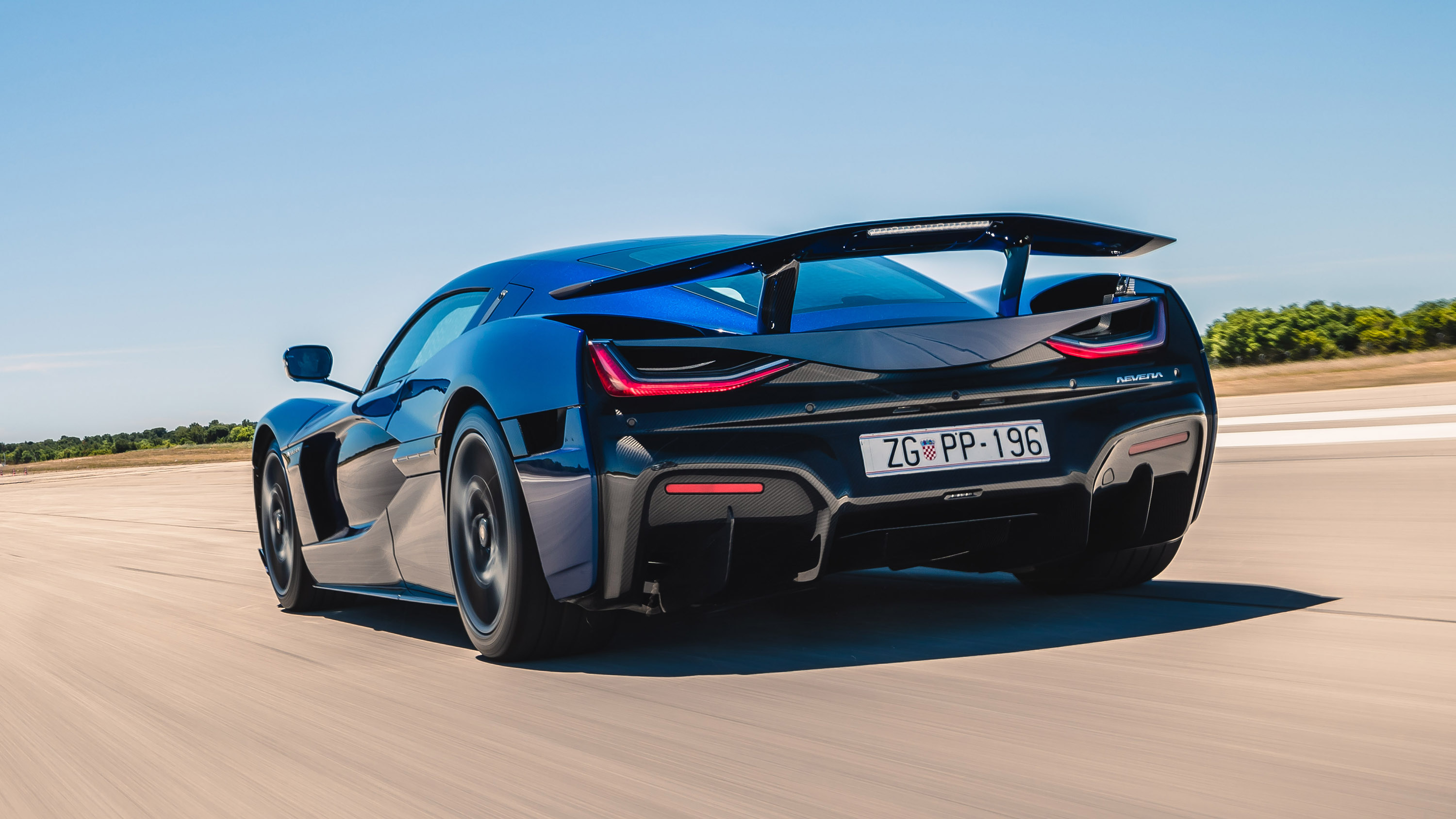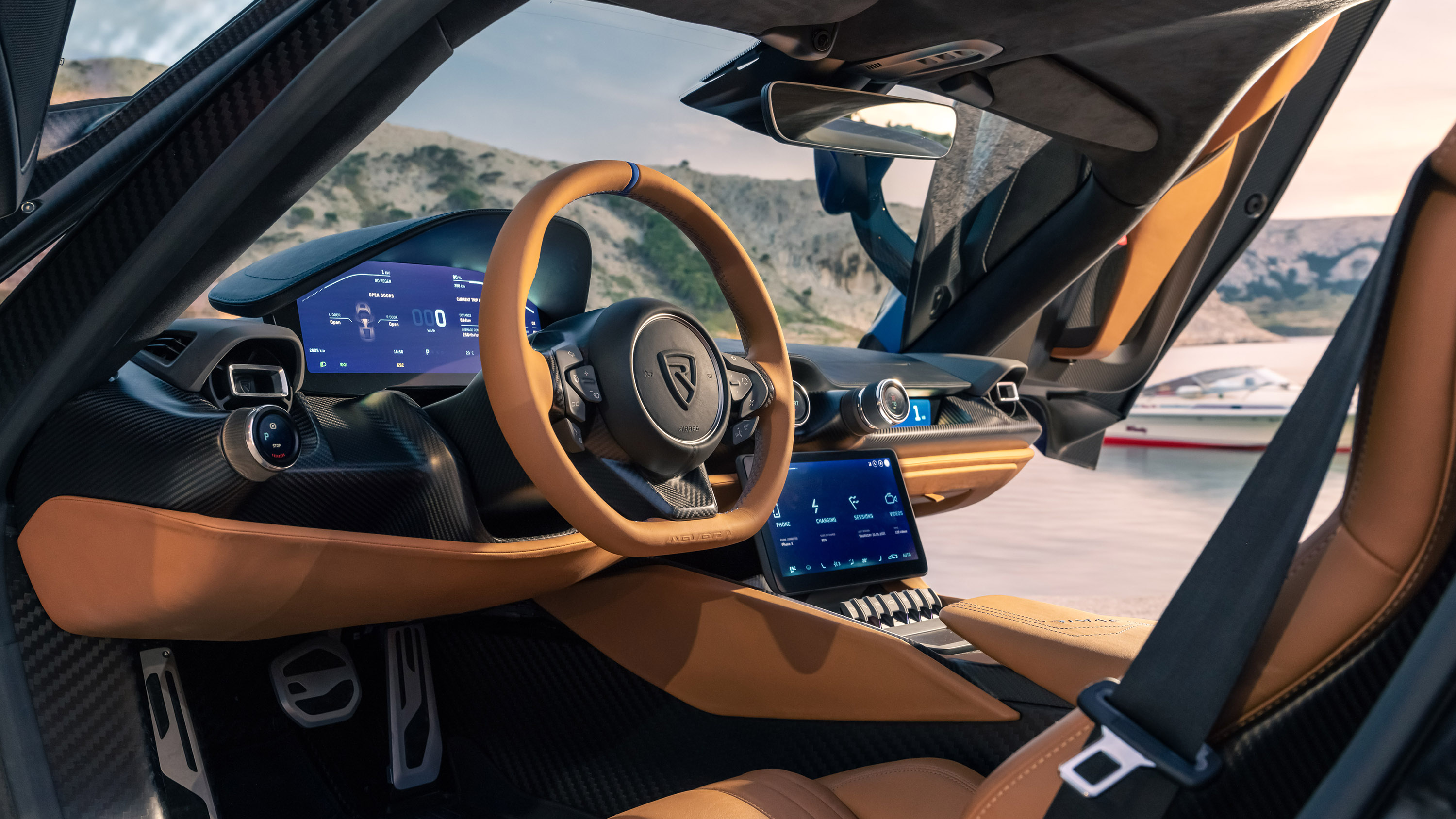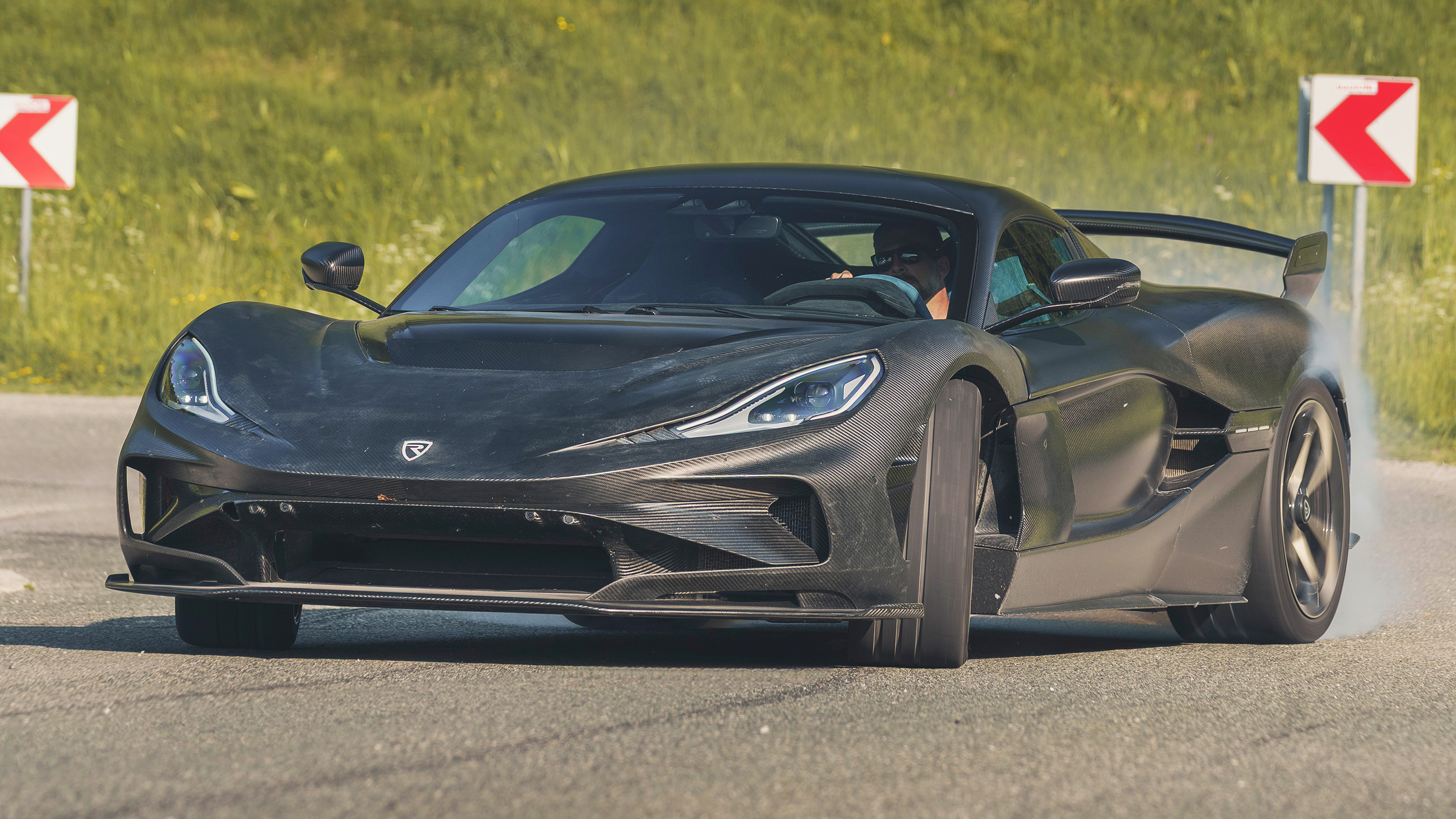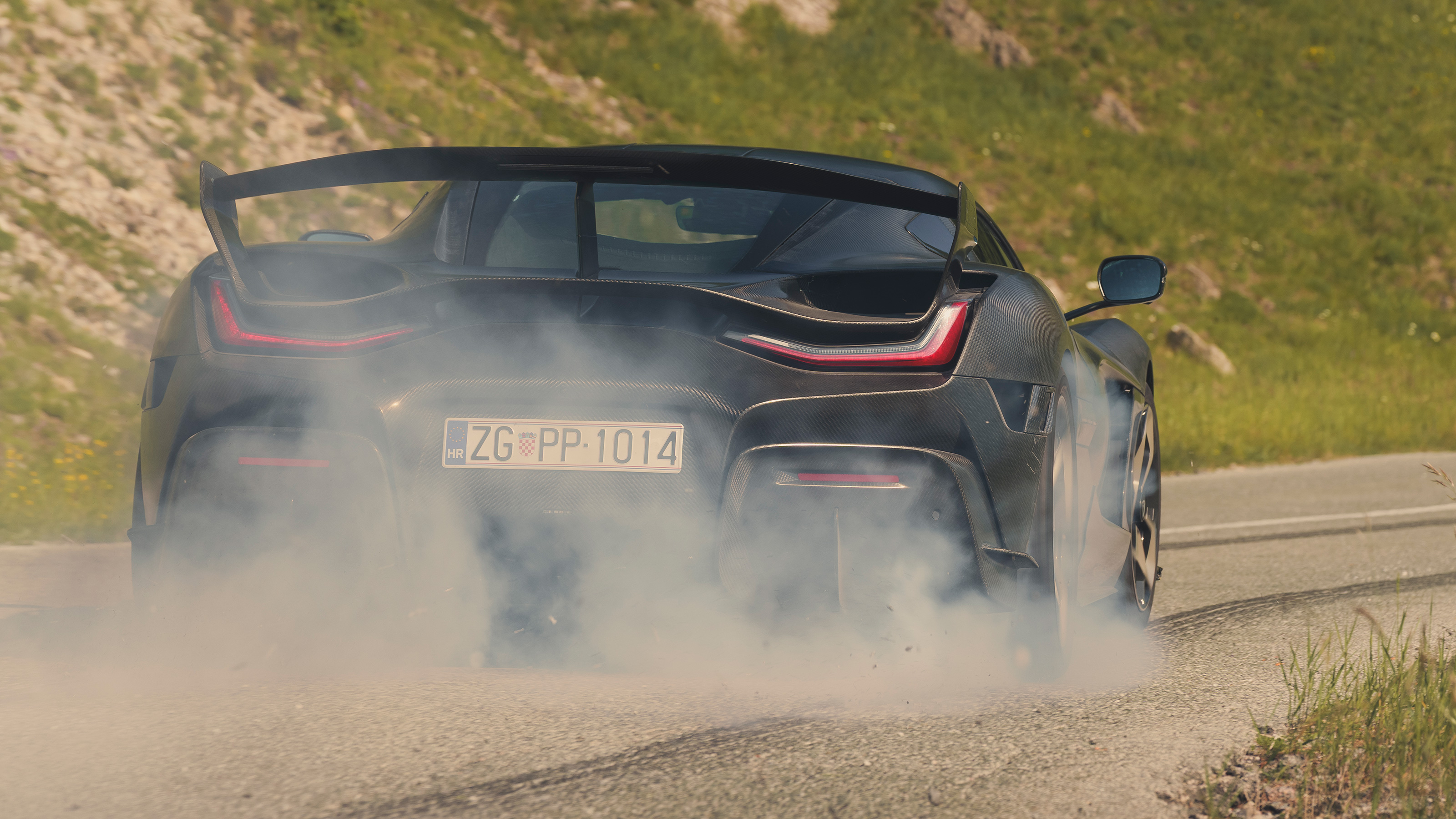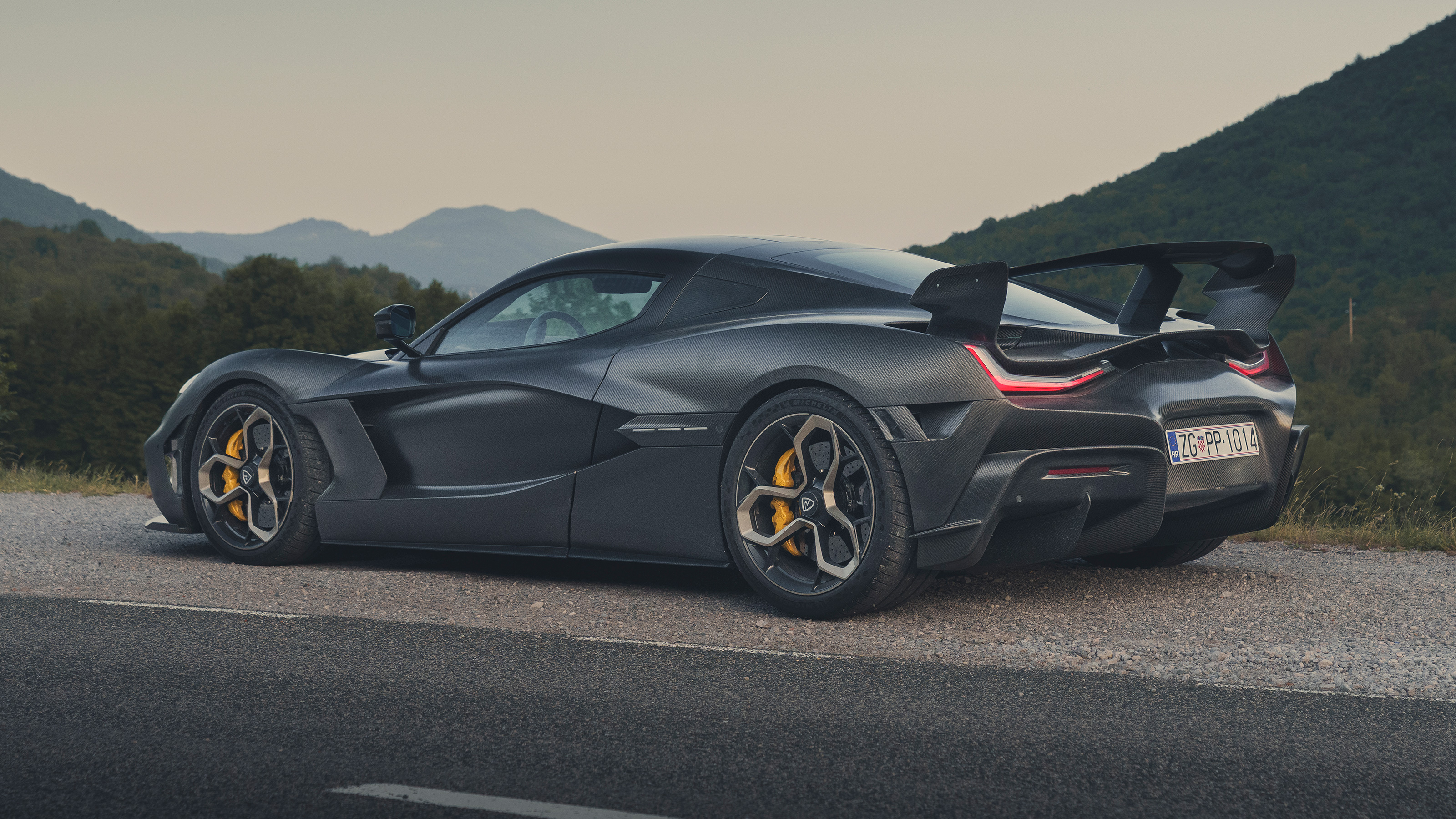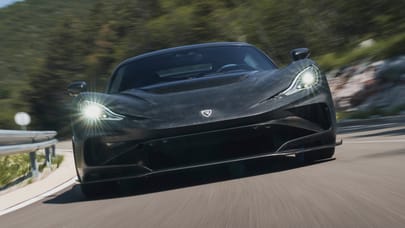
Rimac Nevera review
Driving
What is it like to drive?
Let’s just explode a myth here: fast cars aren’t all about simply going fast. If that was the secret, the Rimac Nevera would be in at number one with a bullet on what old folks used to call the hit parade. But we’re just as interested in the how, why and what happens along the way as we are in the end result.
Except that the Nevera really is astonishingly fast. Fast in a way that’s tricky to put into words, either while you’re sitting in it trying to process what the hell is happening to your mind, body and soul when you nail the throttle, or a few days later writing about it. Fast in a way that doesn’t just squeeze the air from your lungs, it sends your eyeballs hurtling into the back of their sockets.
Sub three seconds to 60mph is the sort of fast that some people find rather discombobulating. Sub two would simply make the uninitiated weep. The Nevera is a highly emotional experience. It lays waste to the current hypercar hegemony.
Have you driven it properly?
Our first drive culminated in a drag race at a small airport somewhere in Croatia, a runway being the only possible location to experience the sort of violent thrust the Nevera is capable of. Actually doing a launch start is dead easy: select Track mode on the dash mounted – and beautifully made – rotary controller nearest your right hand, hold your foot on the brake pedal for a few seconds, then release and stand on the accelerator pedal.
The next 10 or 15 seconds are simply vaporised. Time ceases to exist. It’s like a science experiment. Or perhaps a magic trick. Whatever it is, I have to do it twice just to be sure. Then a third time to double-check that what happened the first two times were for real.
The Nevera uses 77 separate ECUs and millions of lines of code are hustled around its body – mainframe? – in less time than you can think. I really have no idea how it all works. But what I can confirm is that off the runway and on ordinary roads the Nevera is equally convincing. This is obviously important. Drive it in one of its less aggressive modes and it does a very reasonable impression of, say, a Bentley Continental GT. It’s suspended on double wishbones all round with electronically controlled dampers and active ride height, so it’s tolerably comfortable at everyday speeds, if occasionally crashy over sudden surface imperfections and potholes.
What about the Nevera R?
Not so much driving as teleportation. The shocking instant punch it applies to the road beggars belief. It asks very serious questions of your self control, because if you hold down the throttle pedal for more than four seconds, you are likely the fastest moving land-based object on that continent. In less time than it takes to read this sentence.
EVs being fast surprises no-one, of course. What's so amazing about the R is how manageable it is, how it makes sense of such a nonsense power total. Not only is 2,107hp on tap, all of its is useable. Not in the eyes of the law of course, but can the chassis live up to it? Does the suspension keep up? Are the brakes a match? Yes, yes, yes. It's all so cohesive. It's engineered with the completeness of a Porsche or a McLaren, but has speed none of their road or race cars could even dream of.
Frankly, it's incredible that it's legal to take one of these on the public road with a normal driving license. G-force like this was until recently the exclusive preserve of NASA.
How does it handle?
The Nevera’s fully electric steering is pretty well calibrated and allows you to pour the car in and out of corners with one linear motion. It’s not overflowing with natural feel but then this is a dark art these days. There are seven different drive modes, Sport being the optimum if you’re after the most engaging everyday drive, by way of sharpened throttle, brakes, suspension, and steering.
Range is obviously more parsimonious with the energy, Track turns everything up to 11, Custom allows you to mix and match, while Drift basically sends all the torque to the rear axle if you want to kiss goodbye to your Michelin Pilot Sports. (We try that on the runway too, and it’s proof that someone at Rimac, probably Mate himself, has a strong sense of humour, but also that his software guys are mindbogglingly clever. The thing just dances.)
The secret sauce here, of course, is the torque vectoring, a fiendishly complex set-up that effectively turns the Nevera into five cars in one. This sort of approach could risk a form of schizophrenia, but the result here is a remarkable bandwidth. It’s called Rimac All-Wheel Torque Vectoring (R-AWTV 2) and effectively supplants regular ESP and traction control systems, working predictively and responsively to make 100 calculations per second.
On a twisty mountain road, the Nevera basically summons up the sort of wieldiness you’d find in, say, the Porsche 911 Turbo, but punches out of a corner with the ferocity of something that has three times the Porsche’s horsepower (which it has). This hurricane force isn’t a surprise, but the agility, poise and its handling smarts are. It feels, oh, half a tonne lighter than it is, like a car with a low centre of gravity and optimum weight distribution (the battery pack weighs 700kg).
And how well does it stop?
Miro and his team are still finessing the braking, but it’s clever stuff: an electro-hydraulic brake booster with a pedal feel simulator distributes braking force between the old-school friction brakes – 390mm Brembo carbon-ceramics front and rear – and the electric powertrain, depending on which is thermally optimal at that given moment. Another magic trick. Perhaps unsurprisingly, the Nevera offers the highest amount of regenerative braking of any EV currently on sale. It also means you can hustle along a twisty road in one-pedal mode, though the faster you go the bigger the leap of faith. When we tested the prototype there was still work to be done here blending the friction stoppers with the regen. The Nevera R has new silicon-coated brakes for better fade resistance, and they are phenomenally dependable.
Then there’s the Nevera’s chassis, made entirely of carbon fibre – bonded roof, integrated battery housing and rear subframe – which gives it the torsional rigidity of an LMP car. In fact, Rimac claims it’s the most rigid road car ever made, and at 70,000 Nm/degree (approximately twice as stiff as the far-from-floppy and still brilliant Lamborghini Aventador), we wouldn’t dispute that.
There’s the odd creak and groan as a result – carbon fibre can generate unusual acoustic anomalies – but mostly you’re just aware of how phenomenally well-made and effective the Nevera is. Yes, the urge is there to reach for shift paddles, and the nature of the powertrain invariably removes a layer of interaction. It doesn’t sizzle like a V12. But as you can imagine, the availability of almost 2,000 expertly calibrated horsepower makes up for that. And actually it sounds really good, an authentic mix of whoosh, whir and sci-fi. Not so far from a Chiron, then.
Problems? The drive selector, another rotary selector sited to the left of the steering wheel, can be a little slow to respond as you move from P to D. They’re working on it. The driver’s seat and the central storage binnacle creak, so maybe Alcantara would be better than leather. The fact is that the Nevera’s structure is so stiff they’re still chasing NVH ghosts in the machine.
Variants We Have Tested

Trending this week
- Car Review
Hyundai Kona
- Long Term Review
Time's up with the Mini Countryman: here's the six-month verdict




